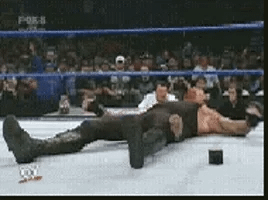Housekeeping
First, a quick bit of housekeeping.
It’s obviously been a while since you heard from us, and it’s not for lack of articles stuck in draft or a lack of interest on our part. We get such a large and positive response to this newsletter, it’s tough to be publishing infrequently.
But my actual business is a very busy vineyard consultancy and when, say, the vines decide to arise from the grave and just explode in growth… Well, as many of you know vineyard work just took off!
We’ve been toying with moving to Substack’s optional paid subscription primarily to force a more regular and committed publishing schedule on our part. It’s difficult to step away from paying clients but a financial commitment on our end, even small, would force our hand. Thanks to all those who have pledged… we might be taking you up on it! We’re also working on our long overdue second season of Wines & Vines!, so look for that as well.
Currently, I’m toying with also publishing much shorter articles. The article length seems to get away from me (there’s also so many interesting things to share!) but I am hoping that shorter, more frequent articles are of interest.
I’m partly just curious what people prefer to read. So if you like shorter but more frequent - or you hate it and prefer infrequently long form - let me know! The point after all is for you to read it, so whatever helps with that I’m all ears!
Onto the main show:
Are Mildew-Resistant Vines Already Failing?
The New Phytologist published a very interesting paper called “Multiple deletions of candidate effector genes lead to the breakdown of partial grapevine resistance to downy mildew”.1
Right off the bat, I want to be clear that most of this paper is above my pay grade. I am not going to pretend to understand heady stuff like:
“GEMMA also estimated the proportion of phenotypic variation explained (PVE) by genotypes. We corrected the significance threshold by the Bonferonni criterion calculated as −log10(α/k), where k is the number of statistical tests conducted and α = 0.05.”
Enthralling, I’m sure.
What tipped me off was Alain Deloire, a (now) retired professor from the Agro-Institute in Montepellier2. He’s an excellent LinkedIn follow. What specifically caught my eye was:
“Although resistant grapevine varieties are becoming more accessible, P. viticola populations are rapidly evolving to overcome these resistances 😭”
You can read both the paper and his comments (linked at the bottom). The conclusion is simple - we are already seeing signs that downy mildew is overcoming the resistance we were breeding for.
What was the point?
For a very quick detour - we have been breeding more resistant hybrids with vinifera to create new hybrids that succeeded in being both drinkable and carrying some other major benefit(s). The most common targeted benefit, due to Europe’s own challenges, has been downy mildew resistance. But other forms of fungal resistance as well as other benefits have been targeted.
These benefits mean not only improved yield and vine health but also reduced use of plant protection sprays. You may be familiar with the most famous new grouping PIWI (from the German Pilzwiderstandsfähige Reben).
Many people think hybrids retain all their initial resistances but this is not the case. For example, very few of the “new” hybrids have been bred for cold resistance. And due to multiple crossings with vinifera, most new hybrids are no more cold resistant than vinifera like Riesling.
As we all know there are always trade offs.
What does this mean for the future?
This is the big question. The paper is not stating that all is lost. And the argument in favor of new resistant grapevines has never relied solely on breeding. The goal has always been a layered approach with multiple interlocking strategies.
Yet the unfortunate news in this paper, and many others,34 is that these new resistant varieties may lose their resistance faster than we expected. Nature finds a way. The exact mechanisms are being discovered in papers like this and how predictive this research is, well, we’re still on something of a case-by-case basis.
At the same time, the exact direction this will go is very much unknown. It is possible some of these results are limited to specific new varieties or that these “failures” will open the door to new understandings of fungal evolution. We always have so much to learn and this result leaves me with neither gloom nor optimism. We just continue the fight, learning a bit more along the way.
A last word from the authors:
“With a high mutation rate, as observed in the evolution at the avrRpv3.1 locus, pyramiding may not necessarily be the most sustainable approach for preserving the efficacy of grapevine resistance genes. However, drawing a general law from our results on Rpv3.1 resistance would be presumptuous. The adaptation of the pathogen to host resistance is a phenomenon influenced by numerous determinants, and it should be considered on a case-by-case basis. Factors such as the impact of effector mutation on the strain's fitness need to be evaluated in each specific scenario.”5
BCGA Grower’s Day
A reminder that this Wednesday, August 7th, is the BC Grapegrowers Association’s “Grower’s Day.”
I’m particularly excited to hear one of my favorite (after you, Simone) wine scientists Markus Keller speak.
I’ll also be on a panel talking about why irrigation is the most powerful tool we have.
I’m sure I won’t say anything controversial.
You can find tickets here.
https://nph.onlinelibrary.wiley.com/doi/10.1111/nph.19861?af=R
https://www.linkedin.com/posts/alain-deloire-b0483577_int%C3%A9ressante-publication-qui-montre-comment-activity-7218464314133794816-0c5_
https://apsjournals.apsnet.org/doi/10.1094/PHYTO-11-21-0458-R
https://bmcplantbiol.biomedcentral.com/articles/10.1186/1471-2229-10-147
https://nph.onlinelibrary.wiley.com/doi/10.1111/nph.19861?af=R






